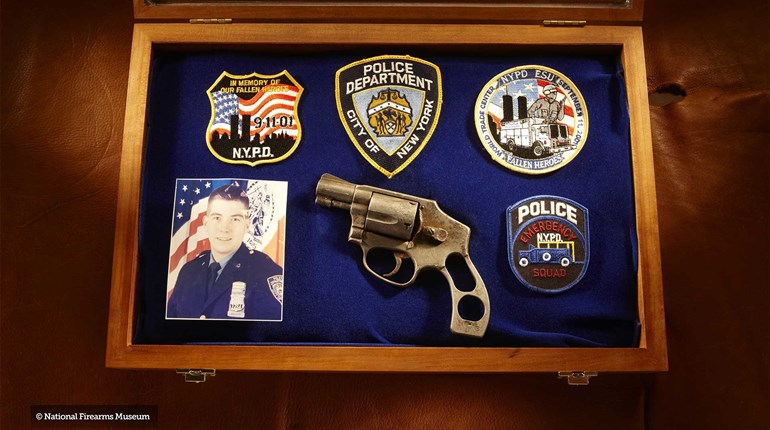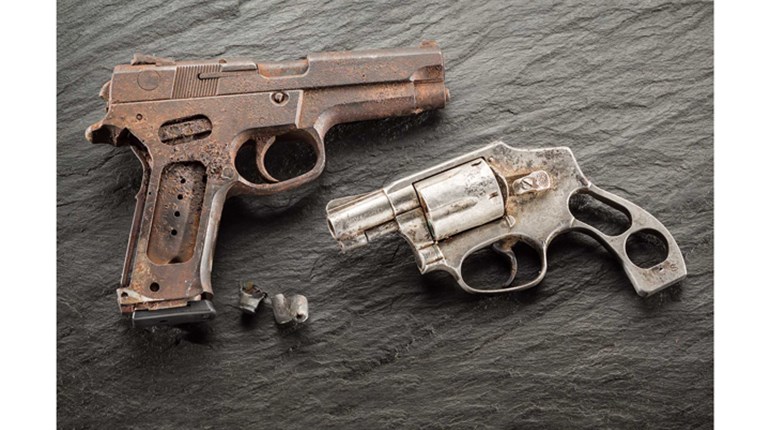
Good planning for a very bad day
We’re not sure much would surprise us if we could share candid reflections with fellow Americans on the events of Sept. 11, 2001. We suspect that private thoughts from so varied a people on such a dreadful anniversary could be eerily similar, wildly divergent, or a sour colloid somewhere in between. Any of the possibilities seem to us entirely explicable.
For our own part, one of those in-between places is, “What could I have done to help myself and others?” Here too, the range of possibilities is huge. On United Flight 93, we can deduce that the options were dreadfully narrow, perhaps even non-existent, for all but a very few. One thing we do know: Those who could act did so with astonishing courage under ominous, dire circumstances, and we’ll never be able to calculate how much they changed history, to say nothing of the many individual lives they undoubtedly saved. Of the travails aboard American flights 11 and 77, and United 175, we know even less.
In the World Trade Center towers and the Pentagon, the lens is somewhat different. Thanks to New York City and Washington, D.C., area first responders (and many other courageous individuals), a remarkable number of people were saved or rescued. Our 9/11 anniversary First Gear therefore gives some thought to personal gear that might serve rescuers and victims alike in travail, though hopefully never again on the scale of that fateful day.

Light
The horrific damage done by the crashed aircraft and subsequently compromised structures may have put many survivors and victims in wholly unexpected darkness, and it seems very likely that visibility could have been crucial in the circumstance. No matter what the reason for a “lights out” episode, if you carry only one mechanism it probably ought to be a flashlight.
It’s no surprise that there are many choices, but the options can be usefully narrowed with a few criteria. In a tie for first is brightness vs. endurance: A 1,000 lumen light with only 15 minutes of runtime won’t be nearly as useful as 50 lumens with a 50-hour runtime.
This in turn invokes consideration of the tie for second place—power source life vs. availability. Highly esoteric or expensive batteries aren’t a good plan, even with good shelf life. As a matter of some experience, these are less likely to be maintained. In this day and age—unlike in 2001—we like AA or AAA if we can get the other capacities (like variable brightness) we need, CR123A in a pinch (because soooo many fabulous choices use this source), and USB charging is our actual favorite (look around the office and home, and you’ll see just how few excuses you’ll have for a drained device).

A third consideration is color. You definitely want a white light source for many actions you might need to perform—like emergency medical care where color discrimination is crucial (“Is that wetness blood, or …?”)—but there’s major disagreement about full spectrum light being the best in smoky or dusty conditions. This last is another reason for intensity control: Too much power is actually less useful if it’s merely reflected harshly back. It may be important to preserve dark-adjusted eyesight as well, so low-emission settings that save battery life provide a dual benefit.
Don’t discount the emotional value of a light source, either. Unrelenting dark is literally torture for most human beings, and being the guy or gal with a little judicious light might greatly help over-stressed companions.

Air
Both short- and long-term respiratory problems were fostered by 9/11 conditions, and speculation about their preventability is bootless: Both victims and rescuers did what they had to do, and both had consequences and side-effects that were severe, even lethal. Products like this may be $40 well spent nearly anywhere you could be trapped indoors.
A possible adjunct is this—a flame resistant garment. While obviously no proof against a jet fuel conflagration, it could buy precious seconds.

Egress
If you’re on your own, this is a problem both simpler and more complex. It’s simpler in the sense that your concerns can focus on your own needs; it’s more complex in the sense that considerable muscle power and/or teamwork may be required in a heavily damaged structure. At the minimum, we’d recommend a multitool (here, here, or a classic, here), gloves and 50 feet of rope. Depending on the materials in the structure you’re trying to exit, a tool like this may be advisable. Remember how useful an implement to break formidable modern glass might be as well, and not just anything will suffice.
Gloves are a “gimme,” but often overlooked, we find. Not only do they prevent injury in what may be a perilously debris-clogged environment, they effectively increase the power of your hands in many applications, especially in twisting, climbing or descending tasks.
The rope is a puzzler to some, but it has many potentially lifesaving uses. Climbing rope is the toughest, but also the most expensive and not as versatile (without training) as you might imagine. It’s intended for repeated, high-stress use, however, and this explains both its cost and excellence. Paracord is the minimum we’d consider, but while strong and affordable per unit mass and bulk, its uses are limited. Consider, for instance, the difficulty of climbing or descending on it’s slender (4 to 5mm) diameter. A good combination of reasonable cost and high strength may be found in webbing instead of literal rope, and it has a host of other binding and carry applications for which round rope is not as well suited.
A last item here is both elementary but dangerously overlooked, and perhaps best cast in the form of a question: “Hey, could you run in those shoes?” In the past, this disproportionately concerned women, but men’s shoes are increasingly becoming fashion-only statements, too. There’s an easy fix, though: Fumigate those about-to-be-tossed athletic shoes, and stick them in your desk drawer at the office. That’s way better than those Italian pumps (or loafers) in a pinch, capisce?

Medical
This is a universe unto itself, although there’s a notable lack of truly good, small kits affordably packed for civilian use. They’re generally long on cheap, poor-quality stuff for trivial injuries, and lacking on the sort of short-term but heavy-duty components that will save lives in actual peril. Do your research and decide what lets you sleep at night, but a tourniquet, 4x4s (sterile), CoBan, and QuikClot will make a surprisingly good start.

Comm
Don’t forget that in emergencies the cellphone network we take so much for granted will be unavailable, crashed perhaps by mishap or overload, but maybe by design too—malfeasant, or otherwise. Yet more-than-adequate alternative communication (albeit less direct) is available and comparatively inexpensive (consider this, or this). It won’t let your reach loved ones directly, but likely can bring life-saving help far faster than pipe-tapping in Morse Code.
On the other hand, maybe brush up on your Morse, too.
































